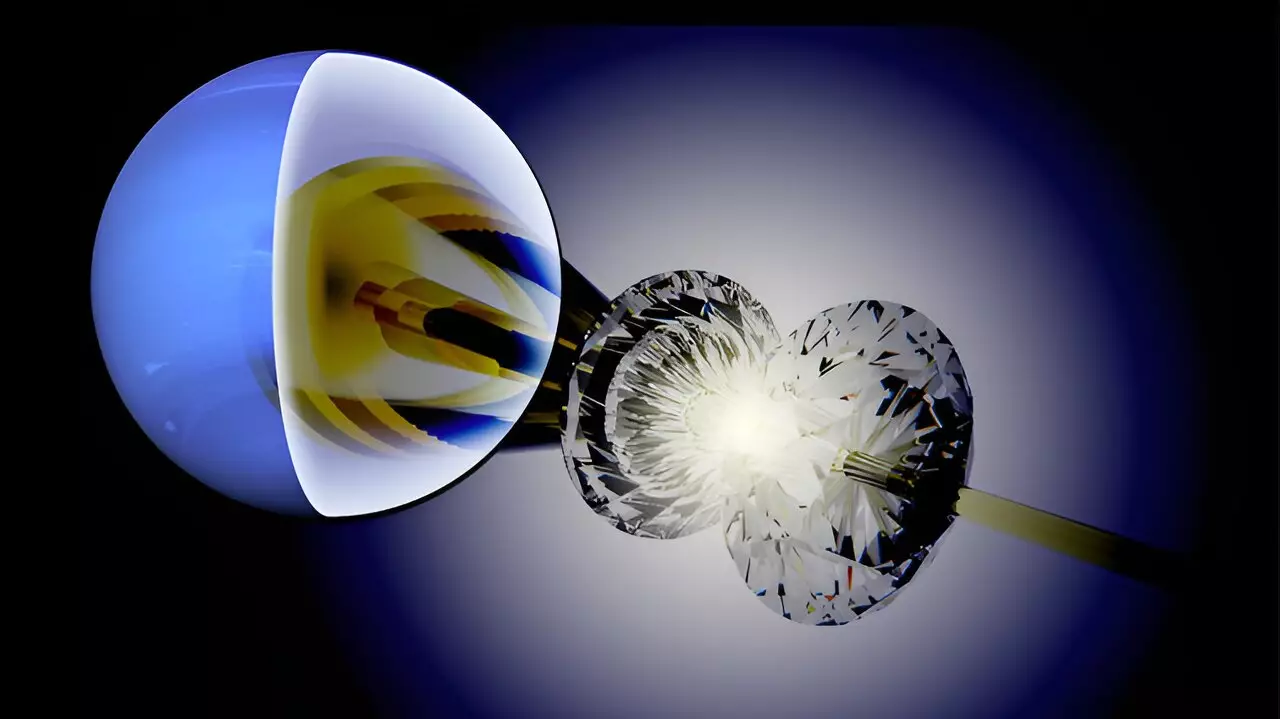In a recent publication in the Journal of Applied Physics, a team of researchers from Lawrence Livermore National Laboratory (LLNL), Argonne National Laboratory, and Deutsches Elektronen-Synchrotron introduced a new sample configuration that enhances the accuracy of equation of state measurements in the diamond anvil cell. This breakthrough allows for reliable measurements in a pressure regime that was previously inaccessible, surpassing 5 million atmospheres and reaching conditions similar to the interior of Neptune.
The development of the toroidal diamond anvil cell by LLNL has been instrumental in pushing the boundaries of static pressure limits in condensed matter research. However, the fabrication of samples for complex experiments posed a challenge, particularly in conducting static compression experiments beyond 300 GPa. The compression environment often fell short of ideal conditions, affecting the quality of equation of state data.
The introduction of the new sample package addresses this issue by providing an improved compression environment, resulting in higher quality equation of state data. This advancement represents a significant step in optimizing static compression experiments under multi-megabar conditions, complementing existing data obtained from gas-gun and NIF experiments at LLNL. LLNL scientist Claire Zurkowski, the lead author of the paper, highlighted the importance of this development in achieving reliable equation-of-state calibrations at unprecedented pressure levels.
The team utilized the LLNL-designed toroidal diamond anvil cell, which can reach pressures exceeding 300 GPa with a sample chamber diameter of approximately 6 µm. This minuscule size, comparable to just 20 times smaller than a human hair, required a meticulous microfabrication process. The target material was embedded in a soft metal capsule through a 10-step procedure, serving as a pressure-transmitting medium. This capsule ensures uniform stress distribution around the sample material during compression, crucial for accurate equation-of-state measurements.
The experiments were conducted at Argonne National Laboratory Sector 16 HPCAT and at Deutsches Elektronen-Synchrotron PETRA-III. While the researchers tested the methodology on molybdenum with a copper pressure-transmitting medium, the sample package design is versatile and can be applied to various materials. According to Zurkowski, this work signifies just the beginning of sample-package microfabrication in the toroidal diamond anvil cell, with the potential to advance static equation of state calibrations in physics, chemistry, and planetary science materials into the multi-megabar range where data is currently limited.
The development of the new sample configuration represents a groundbreaking achievement in high-pressure research, enabling scientists to venture into pressure territories previously unexplored. By enhancing the reliability and accuracy of equation of state measurements, this advancement paves the way for a deeper understanding of material behaviors under extreme conditions. The collaborative effort between researchers from different institutions underscores the significance of interdisciplinary approaches in pushing the boundaries of scientific knowledge.


Leave a Reply